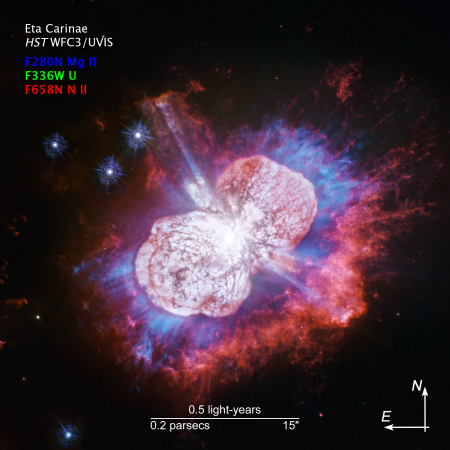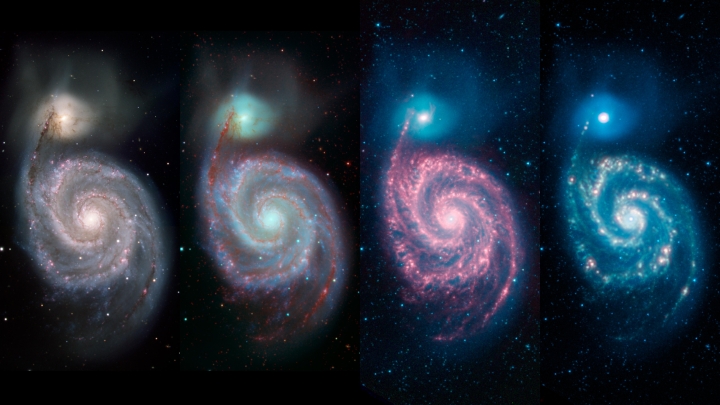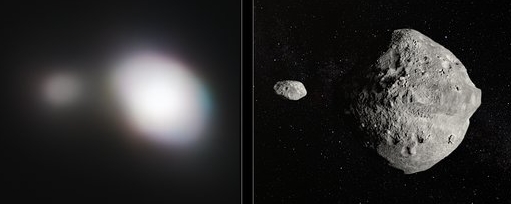More exoplanets found by TESS
Worlds without end: In confirming a candidate exoplanet previously discovered by TESS, astronomers have detected two more exoplanets orbiting the same star.
The transits TESS observed belong to GJ 357 b, a planet about 22% larger than Earth. It orbits 11 times closer to its star than Mercury does our Sun. This gives it an equilibrium temperature — calculated without accounting for the additional warming effects of a possible atmosphere — of around 490 degrees Fahrenheit (254 degrees Celsius). “We describe GJ 357 b as a ‘hot Earth,’” explains co-author Enric Pallé, an astrophysicist at the IAC and Luque’s doctoral supervisor. “Although it cannot host life, it is noteworthy as the third-nearest transiting exoplanet known to date and one of the best rocky planets we have for measuring the composition of any atmosphere it may possess.”
But while researchers were looking at ground-based data to confirm the existence of the hot Earth, they uncovered two additional worlds. The farthest-known planet, named GJ 357 d, is especially intriguing. “GJ 357 d is located within the outer edge of its star’s habitable zone, where it receives about the same amount of stellar energy from its star as Mars does from the Sun,” said co-author Diana Kossakowski at the Max Planck Institute for Astronomy in Heidelberg, Germany. “If the planet has a dense atmosphere, which will take future studies to determine, it could trap enough heat to warm the planet and allow liquid water on its surface.”
Without an atmosphere, it has an equilibrium temperature of -64 F (-53 C), which would make the planet seem more glacial than habitable. The planet weighs at least 6.1 times Earth’s mass, and orbits the star every 55.7 days at a range about 20% of Earth’s distance from the Sun. The planet’s size and composition are unknown, but a rocky world with this mass would range from about one to two times Earth’s size.
Even through TESS monitored the star for about a month, Luque’s team predicts any transit would have occurred outside the TESS observing window.
I think the results from TESS are soon going to overwhelm the general press. I myself had to check and make sure this story was about different exoplanets than the previous exoplanet discovery story from two days ago.
What is most interesting about these new exoplanets is their mass and size. TESS appears so far to be finding a lot of superEarths, something that Kepler did not do.
Worlds without end: In confirming a candidate exoplanet previously discovered by TESS, astronomers have detected two more exoplanets orbiting the same star.
The transits TESS observed belong to GJ 357 b, a planet about 22% larger than Earth. It orbits 11 times closer to its star than Mercury does our Sun. This gives it an equilibrium temperature — calculated without accounting for the additional warming effects of a possible atmosphere — of around 490 degrees Fahrenheit (254 degrees Celsius). “We describe GJ 357 b as a ‘hot Earth,’” explains co-author Enric Pallé, an astrophysicist at the IAC and Luque’s doctoral supervisor. “Although it cannot host life, it is noteworthy as the third-nearest transiting exoplanet known to date and one of the best rocky planets we have for measuring the composition of any atmosphere it may possess.”
But while researchers were looking at ground-based data to confirm the existence of the hot Earth, they uncovered two additional worlds. The farthest-known planet, named GJ 357 d, is especially intriguing. “GJ 357 d is located within the outer edge of its star’s habitable zone, where it receives about the same amount of stellar energy from its star as Mars does from the Sun,” said co-author Diana Kossakowski at the Max Planck Institute for Astronomy in Heidelberg, Germany. “If the planet has a dense atmosphere, which will take future studies to determine, it could trap enough heat to warm the planet and allow liquid water on its surface.”
Without an atmosphere, it has an equilibrium temperature of -64 F (-53 C), which would make the planet seem more glacial than habitable. The planet weighs at least 6.1 times Earth’s mass, and orbits the star every 55.7 days at a range about 20% of Earth’s distance from the Sun. The planet’s size and composition are unknown, but a rocky world with this mass would range from about one to two times Earth’s size.
Even through TESS monitored the star for about a month, Luque’s team predicts any transit would have occurred outside the TESS observing window.
I think the results from TESS are soon going to overwhelm the general press. I myself had to check and make sure this story was about different exoplanets than the previous exoplanet discovery story from two days ago.
What is most interesting about these new exoplanets is their mass and size. TESS appears so far to be finding a lot of superEarths, something that Kepler did not do.




